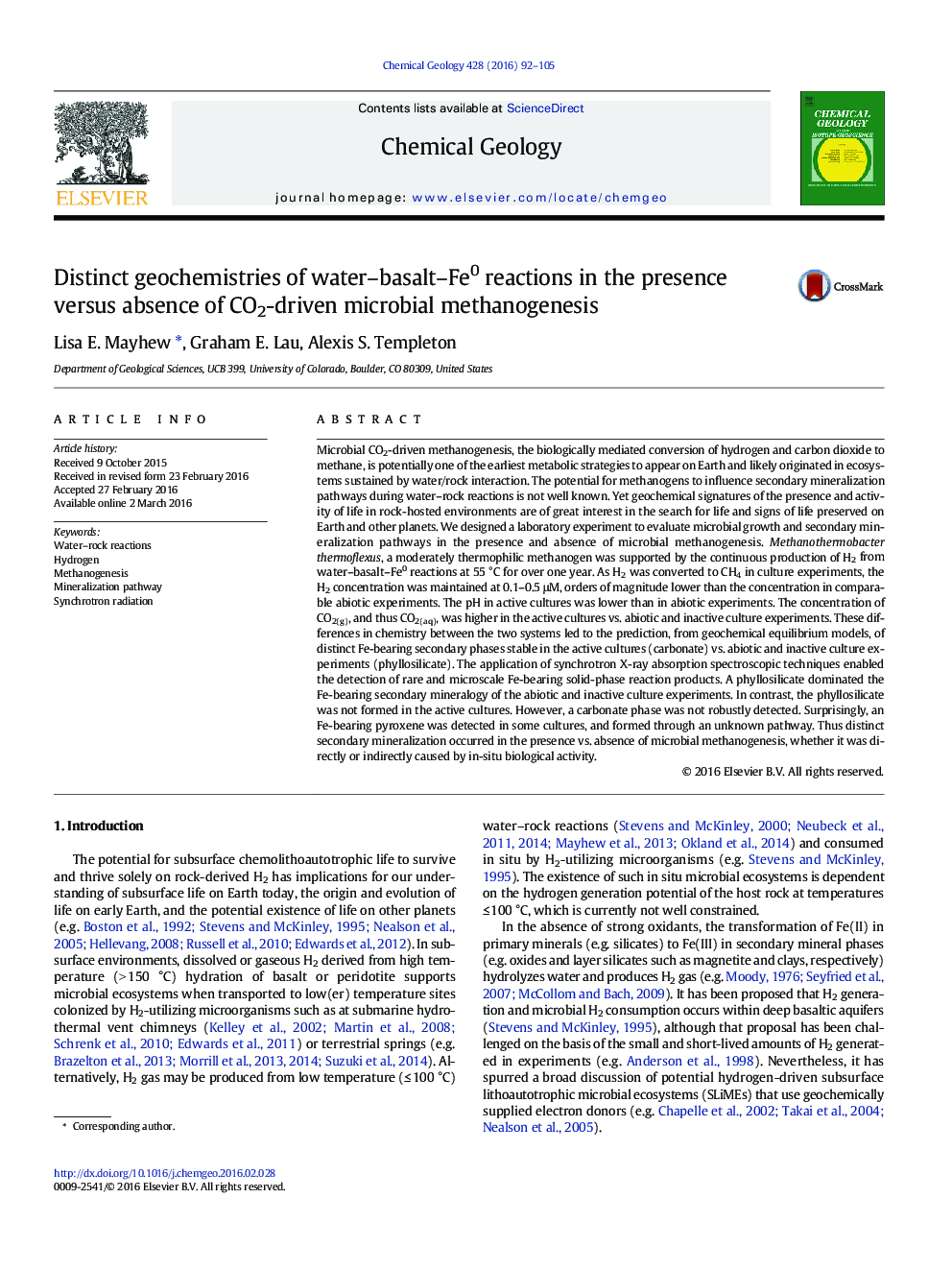| Article ID | Journal | Published Year | Pages | File Type |
|---|---|---|---|---|
| 6436131 | Chemical Geology | 2016 | 14 Pages |
â¢distinct differences in gaseous, aqueous and solid phases of water-basalt-Fe0 reactions in abiotic vs. culture experimentsâ¢lower pH conditions (~0.5 pH unit) maintained in active cultures versus abiotic and inactive culture experimentsâ¢thermodynamically predicted mineral phase absent from experiments with active methanogenesisâ¢detection of distinct mineral assemblages representative of active cultures vs. abiotic systems
Microbial CO2-driven methanogenesis, the biologically mediated conversion of hydrogen and carbon dioxide to methane, is potentially one of the earliest metabolic strategies to appear on Earth and likely originated in ecosystems sustained by water/rock interaction. The potential for methanogens to influence secondary mineralization pathways during water-rock reactions is not well known. Yet geochemical signatures of the presence and activity of life in rock-hosted environments are of great interest in the search for life and signs of life preserved on Earth and other planets. We designed a laboratory experiment to evaluate microbial growth and secondary mineralization pathways in the presence and absence of microbial methanogenesis. Methanothermobacter thermoflexus, a moderately thermophilic methanogen was supported by the continuous production of H2 from water-basalt-Fe0 reactions at 55 °C for over one year. As H2 was converted to CH4 in culture experiments, the H2 concentration was maintained at 0.1-0.5 μM, orders of magnitude lower than the concentration in comparable abiotic experiments. The pH in active cultures was lower than in abiotic experiments. The concentration of CO2(g), and thus CO2(aq), was higher in the active cultures vs. abiotic and inactive culture experiments. These differences in chemistry between the two systems led to the prediction, from geochemical equilibrium models, of distinct Fe-bearing secondary phases stable in the active cultures (carbonate) vs. abiotic and inactive culture experiments (phyllosilicate). The application of synchrotron X-ray absorption spectroscopic techniques enabled the detection of rare and microscale Fe-bearing solid-phase reaction products. A phyllosilicate dominated the Fe-bearing secondary mineralogy of the abiotic and inactive culture experiments. In contrast, the phyllosilicate was not formed in the active cultures. However, a carbonate phase was not robustly detected. Surprisingly, an Fe-bearing pyroxene was detected in some cultures, and formed through an unknown pathway. Thus distinct secondary mineralization occurred in the presence vs. absence of microbial methanogenesis, whether it was directly or indirectly caused by in-situ biological activity.
